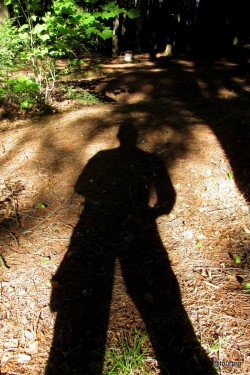GREETINGS TO OUR CANADIAN FRIENDS
If you are planning to recreate in the Adirondacks this Victoria Day weekend (Canada) May 18-21, the New York State Department of Environmental Conservation asks you to please remember the following:
HIGH USAGE LEVELS: Visitors to the Eastern High Peaks Wilderness this weekend should be aware that trailhead parking lots and interior campsites may reach capacity as early as Friday afternoon. Visitors should plan accordingly and are advised to seek backcountry recreation opportunities in other areas of the Adirondack Forest Preserve during these high use weekends.
BEAR RESISTANT CANISTERS: Regulation requires the use of bear-resistant canisters by overnight users in the Eastern High Peaks Wilderness between April 1 and November 30. NYSDEC encourages the use of bear resistant canisters throughout the Adirondacks.
Contenants anti-ours (22k pdf) Version francaise
OTHER BEAR AVOIDANCE TIPS
- Store all food, toiletries and garbage in bear-resistant canisters.
- If you are outside the Eastern High Peaks Wilderness you can use a food hang. Store all food, toiletries and garbage in the bag. Use a dark colored cord that is 25 meters long. Hang the bag 5 meters above the ground and at least 3 meters away from trees.
- Keep food in bear-resistant canister or food hangs at all times – take down only what is needed for cooking.
- Never leave food unattended unless it is in a bear-resistant canister or in a food hang.
- Cook early, no later than 5 p.m., and never cook or eat in your sleeping area
SPRING CONDITIONS: Due to rains and melting snow, wet conditions exist through out the Adirondacks. Hikers are advised to wear appropriate footwear and to stay on the trail – hike through muddy areas and puddles to avoid widening the trails or creating “herd paths” around those areas. Trails above 1000 meters are particularly sensitive to impacts, please avoid them or take extra care to walk in the center of the trail at all times. Water levels in streams and rivers are high – low water crossings may not be accessible.
BLOWDOWN: This past fall and winter the Adirondacks were hit by several strong wind storms and heavy wet snow storms that caused a significant amount of blowdown on the trails. Although DEC Forest Rangers and trail crews have been, and continue to be, working hard to clear trails, significant blowdown – down, or bent over, trees and limbs – can be expected on many trails. Some areas may be completely blocked by blowdown.
BITING INSECTS: “Bug Season” has begun in the Adirondacks. Now until the end of summer Black Flies, Mosquitoes, Deer Flies and/or Midges (No-see-ums) will be present. Follow these steps to minimize the nuisance of biting insects:
- Wear light colored clothing.
- Wear long sleeve shirts and long pants.
- Tuck shirts into pants.
- Button or rubber band sleeves at the wrist.
- Tuck the bottom of pant legs into your socks.
- Pack a headnet to wear when insects are thick.
- Use an insect repellent
with DEET, follow label directions.
Visit the Adirondack Trail Information web page for current weather forecasts, regulations, safety tips, trail conditions, and more.
Enjoy your visit to the Adirondacks!
Courtesy of NYS DEC






